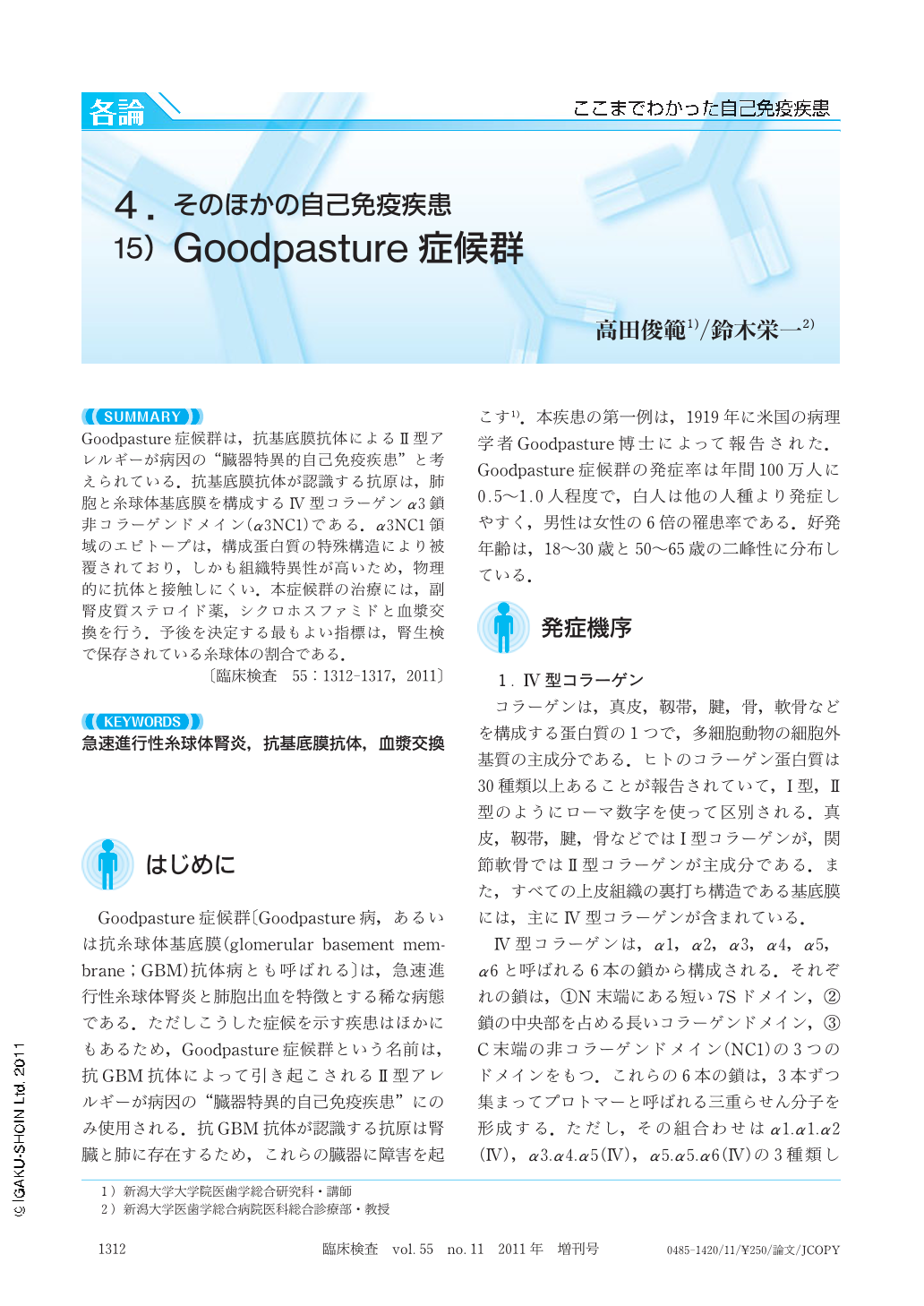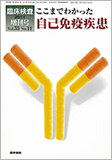Japanese
English
- 有料閲覧
- Abstract 文献概要
- 1ページ目 Look Inside
- 参考文献 Reference
Goodpasture症候群は,抗基底膜抗体によるⅡ型アレルギーが病因の“臓器特異的自己免疫疾患”と考えられている.抗基底膜抗体が認識する抗原は,肺胞と糸球体基底膜を構成するⅣ型コラーゲンα3鎖非コラーゲンドメイン(α3NC1)である.α3NC1領域のエピトープは,構成蛋白質の特殊構造により被覆されており,しかも組織特異性が高いため,物理的に抗体と接触しにくい.本症候群の治療には,副腎皮質ステロイド薬,シクロホスファミドと血漿交換を行う.予後を決定する最もよい指標は,腎生検で保存されている糸球体の割合である.
Goodpasture syndrome is an "organ-specific" autoimmune disease caused by circulating antibodies against an antigen intrinsic to the glomerular basement membrane (GBM). The principal target for the anti-GBM antibodies is the NC1 domain of the alpha-3 chain of type Ⅳ collagen. The autoantibody epitopes specifically present in the lung and kidney are structurally sequestered by adjacent molecules. Thus, the Goodpasture epitopes are decribed as "cryptic", in terms of the capacity for autoantibodies to access the target. The treatment of choice is plasmapheresis combined with prednisone and cyclophosphamide. The proportion of preserved glomeruli may be the best determinant of prognosis.

Copyright © 2011, Igaku-Shoin Ltd. All rights reserved.


